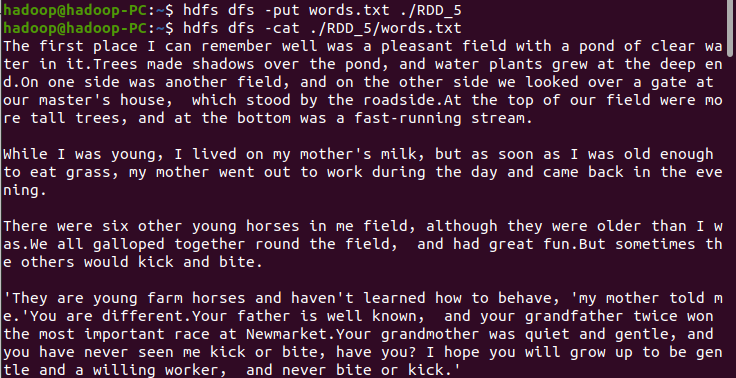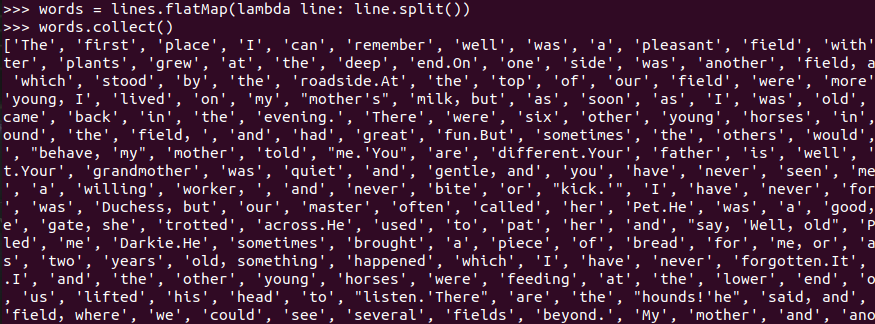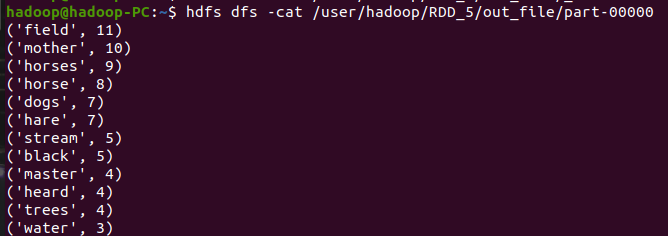5.RDD操作综合实例
一、词频统计
A. 分步骤实现
- 准备文件
- 下载小说或长篇新闻稿
- 上传到hdfs上

- 读文件创建RDD

- 分词

- 排除大小写lower(),map()
 标点符号re.split(pattern,str),flatMap(),
标点符号re.split(pattern,str),flatMap(), 停用词,可网盘下载stopwords.txt,filter(),
停用词,可网盘下载stopwords.txt,filter(), 长度小于2的词filter()
长度小于2的词filter()
- 统计词频

- 按词频排序

- 输出到文件

- 查看结果

B. 一句话实现:文件入文件出
lines = sc.textFile("hdfs://localhost:9001/user/hadoop/RDD_5/words.txt") \
.flatMap(lambda line: line.split()) \
.flatMap(lambda line: re.split(r'\W', line)) \
.flatMap(lambda line: line.split()) \
.map(lambda word: word.lower()) \
.filter(lambda x: x not in stopwords) \
.filter(lambda x: len(x) > 2) \
.map(lambda a: (a, 1)) \
.reduceByKey(lambda a, b: a + b) \
.sortBy(lambda x: x[1], False)
C.和作业2的“二、Python编程练习:英文文本的词频统计 ”进行比较,理解Spark编程的特点。
import string
list_dict = {}
data = []
f = open('test.txt', 'r')
content = f.read()
f.close()
content = content.replace('-', ' ')
words = content.split()
for i in range(len(words)):
words[i] = words[i].strip(string.punctuation)
words[i] = words[i].lower()
if words[i] in list_dict:
list_dict[words[i]] = list_dict[words[i]] + 1
else:
list_dict[words[i]] = 1
# print(list_dict) )
for key, value in list_dict.items():
temp = [value, key]
data.append(temp)
data.sort(reverse=True)
print(data)
- 二、求Top值


